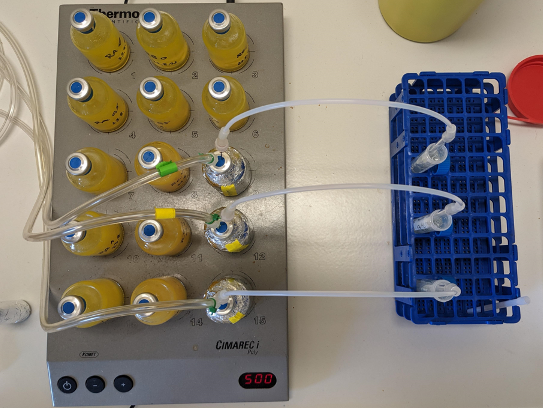
Mercury is a contaminant of global concern due to its environmental mobility as soluble divalent Hg(II) species in aquatic environments or volatile elemental Hg in the atmosphere. The biogeochemical Hg cycle consists of a complex interplay of release, transport, and transformation processes that link Hg emissions to Hg exposure. In the Hg cycle the methylation of Hg(II) species in aquatic environments is of particular concern due to the formation of highly neurotoxic mono-methylmercury (MMHg) which will bioaccumulate in the food chain.
Soils are at the interface between the different spheres of our environment and MMHg production occurs mainly in anoxic soils and sediments. Thus, it is critical that we understand transformation processes affecting the stability of Hg species in soils and aquatic systems. Redox conditions and organic matter (OM) availability and composition are key components of t he fate and transport for most metals, including Hg. The reduction of Hg(II) can influence the Hg pools available to microbial methylators and affect the subsequent methylation process. Redox processes and methylation of Hg(II) in soils and aquatic environments are therefore important processes, affecting the global cycle of Hg and its environmental effects. Our current knowledge of specific Hg transformation processes and species occurring in the environment often remains incomplete.
Our goal is to investigate the effect of different redox active soil components on key transformation processes between Hg species. Our findings will contribute to the conceptualization of Hg cycling and the exchange of Hg between different environmental compartments. This understanding is crucial for the assessment of the effects of reductions in anthropogenic emissions as a result of the Minamata Convention on Mercury and global change effects on Hg cycling.
People: Lorenz Schwab